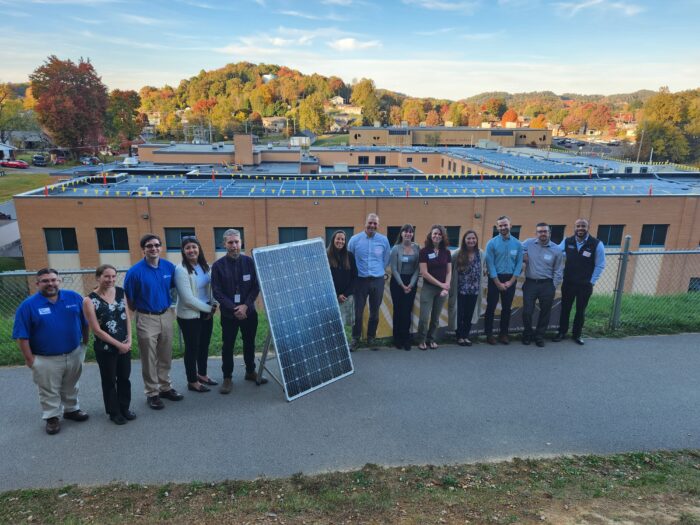Transforming coal mines to shared solar
Meet the expert.
Press play to hear from SELC Staff Attorney Josephus Allmond.
Generations of coal miners have celebrated their child’s first day of school at Wise Primary School in southwest Virginia. Not long ago, the school became a symbol for the region’s transition to clean energy, opting for the lower costs and cleaner air that come with solar power.
Getting to that point took many years and intentional conversations in groups like the Solar Workgroup of Southwest Virginia, where SELC is a member. Just one year after solar panel installation, the school system saved nearly $8 million in energy costs that will be reinvested into the school system. It is one of several schools in the area now tapped into the benefits of solar, an option that wasn’t even available before the Solar Workgroup’s efforts got underway.

Now, with that experience under folks’ belts, and new funding thanks to the 2022 passage of landmark climate legislation, the Inflation Reduction Act, historic coal-producing states like Virginia have an unprecedented opportunity to reenergize their economy and implement environmentally sustainable solutions that work for us all.
“We know that coal can’t be part of the equation if we’re going to address climate change,” said SELC Staff Attorney Josephus Allmond. “But that doesn’t mean that communities that have been dependent on it for decades have to also be left out.”
Re-energizing Southern communities
For generations, southwest Virginia produced millions of tons of coal but production peaked in 1990. The drop in demand left coal-dependent communities facing hardships while looking to transition local economies.
Increased investment in solar can really provide those communities with a lifeline and allow them
Josephus Allmond, Staff Attorney
to reclaim their economic independence.
Shared solar, also called community solar, can be transformational as it opens up who has access to solar power. It’s the name for any solar project where the benefits flow to multiple customers.
The approach provides an equitable practice that efficiently and cost-effectively shares clean energy benefits with entire communities without placing a financial burden on individuals.
How is Virginia rethinking energy production?
Closed coal mines and abandoned production facilities leave behind large stretches of cleared, unused land that’s ripe for clean energy alternatives. The passage of the Inflation Reduction Act affords Virginia communities an unprecedented opportunity to invest that land in community solar projects.
“On the federal level, the IRA has historic incentives for renewable energy projects that are sited on former coal mines or former coal generating units,” said Allmond. “That has an opportunity to be a really nice complement to Virginia’s existing Brownfield Program.”

Established in 2020, the Brownfield Program was meant to provide funds to restore and redevelop contaminated sites like former coal mines. The program never received funding, but the IRA has the potential to change that. A combination of grants for clean energy development and massive tax incentives makes building solar facilities on former coal sites an attractive proposition for developers, who stand to save up to 60 percent of the total cost of their projects, as long as they’re also sited in low-income communities.
“There’s never been a better time for getting new solar projects off the ground in Virginia,” says Robert Kell, the New Economy Program Manager at Appalachian Voices, based out of Norton in southwestern Virginia. “We’re excited to be part of transitioning the coalfields to a clean energy future with a locally-rooted solar industry using disturbed mine lands and commercial sites to create jobs and economic growth.”
What we’re doing now

With new federal funding available, policy changes at the state level will help accelerate the transition to solar, and progress is already underway. SELC and our partners in the Solar Work Group of Southwest Virginia, including the regional grassroots group Appalachian Voices, worked together on legislation to be considered in the next General Assembly session that would expand the shared solar program into Appalachian Power Company’s territory. Appalachian Power, which covers places like Wise, is the sole investor-owned utility in the state that doesn’t yet allow these types of programs.
“Wherever there’s room for a state-level policy that could incentivize more solar in Southwest Virginia, SELC will be there trying to make that a reality,” said Allmond. “I get excited about communities really embracing solar and making it work for them. They’ve been the energy generation centers of the country for a long time — I don’t think there’s any reason that needs to stop, it just needs to take a new form of electricity generation.”
